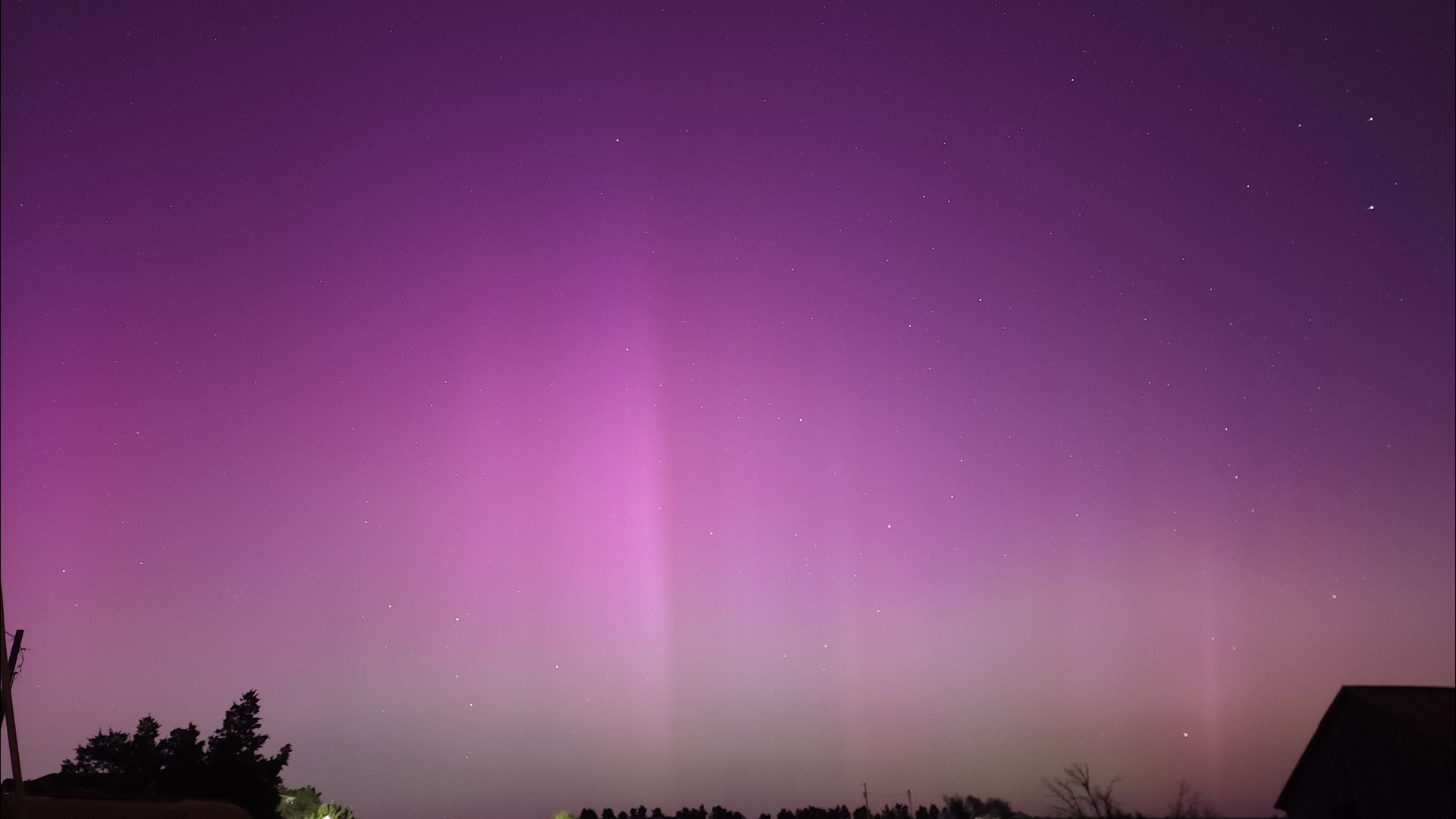BOULDER, Colo. — Coloradans got a rare view of the color and even some of the structure behind the aurora borealis over the weekend. And it came as the sun is likely reaching an energy peak called solar maximum.
“For aurora, there’s a connection between how active the sun is and how active the aurora response is,” said Mike Wiltberger, a senior scientist with the National Center for Atmospheric Research (NCAR).
He said the sun’s energy goes through an 11-year power cycle. The current cycle, called Solar Cycle 25, started in 2019, so it’s likely just now reaching its peak of the season -- but he said he won't know for certain until there is a clear decline in sunspot activity after this recent spike.
He said the biggest solar storms usually happen around the peak of solar maximum, but if you missed this recent big display of the aurora borealis, he said the show is probably not over just yet.
“There are actually some interesting interactions as you’re coming down from solar maximum, down into solar minimum," he said. "You get different regions of higher and slower speeds interacting and creating a different kind of storm and creating a different kind of aurora.”
He also said it’s difficult to tell how long the peak solar activity will last. In Solar Cycle 23, one of Wiltberger's NCAR colleagues, Stan Soloman, captured a structured aurora over the Boulder Flatirons. And that was October 2003 – which was the last time a solar storm of this magnitude hit Earth. That was a couple years past solar maximum in that cycle.
Wiltberger said he expects the northern lights displays to stay active over the next couple of years, which would allow Coloradans several more opportunities to at least see the aurora on the northern horizon. And as for another big one – he said it's not likely that another G5 level geomagnetic storm will occur in such close proximity of the one this weekend, but he wouldn’t be surprised.
“There’s a chance for it to happen, but it's more likely to be more intense at solar maximum," he said. "But the uncertainty comes with our lack of observations. The sun is like 5 billion years old, and we only have a sunspot record that goes back a few hundred years."
SUGGESTED VIDEOS: Colorado Weather

